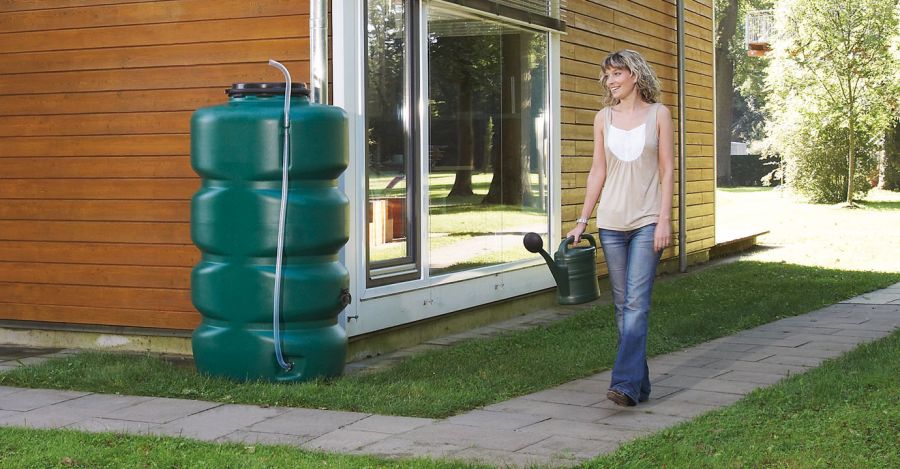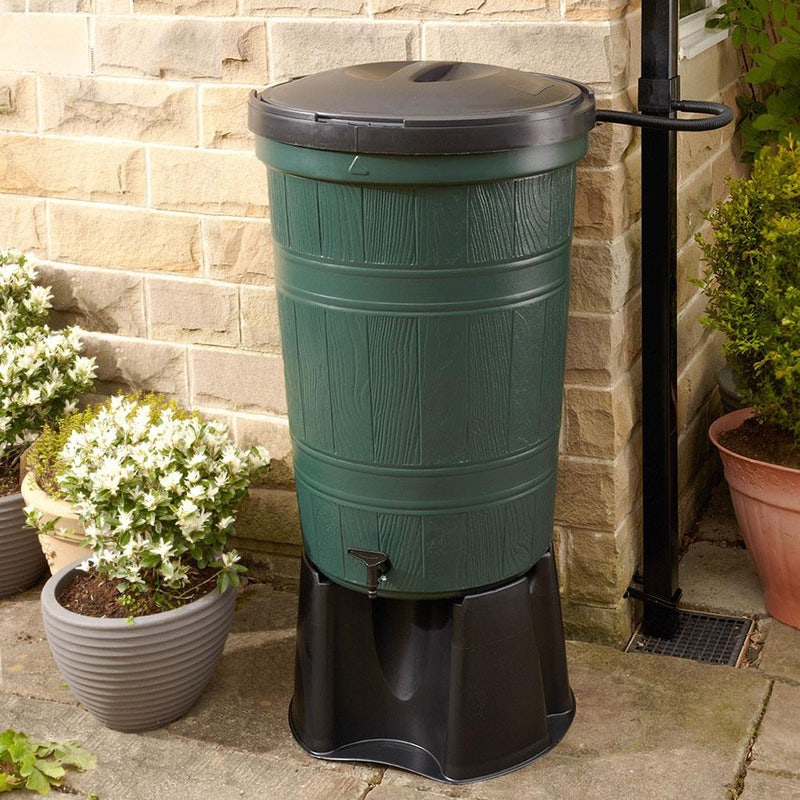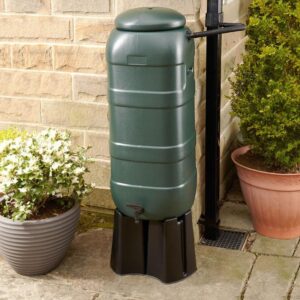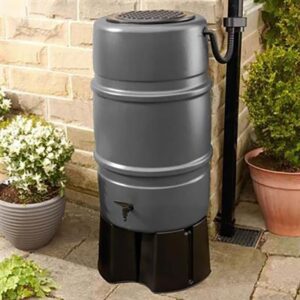If you’re unsure about the uses of a water butt and why it can be valuable when installed on a property, take a look through this guide to find out more about water butts.
Table of contents:
Why install a water butt?
Installing a water butt is important for a variety of reasons.
Typically the main use of a water butt is to collect rainwater via the downpipe on a house. The downpipe will be attached to the guttering via a rainwater diverter.
Note: You might need to move or install a downpipe if it isn’t in place before the water butt.
Here are some of the other reasons why installing a water butt would be ideal:
- Collecting rainwater via water butt is simple and effective; in turn, helping you to do your bit for the environment
- Lower water bills – rainwater to feed plants in our outside of the house
- Rainwater has all the nutrients plants need
- Specific types of water butts can also work as planters
- Some types of water butts can be statement pieces outside the home
In hotter weather or seasons like summer, water butts allow for much more use, even if a hosepipe ban is in place.
Note: Make sure to clean your water butt at least once a year with a safe treatment to reduce the appearance of bacteria and ensure it continues to last for a lengthy period of time.
What are the water butt regulations?
As with any water supply, regulations are in place to safely manage the way you use and source your water. The Water Supply (Water Fittings) Regulations 1999 dictates what you will need to make sure you follow when installing a water butt on your property. This can include but is not limited to, requirements for the water fittings as well as understanding contamination risks and more.
How much water will I save?
According to some statistics, up to 24,000 litres of water can be collected in a water tank from a roof every year. This can be saved and even reused if you want to maintain your garden and do other jobs over time.

What size water butt should I install?
There are a variety of sized water butts. The size you need will depend on the usage and how the water butt will look when sitting outside the property.
How you can use a water butt
You might want a water butt for use with plants or perhaps just need one for growing your own vegetables. There are many uses when it comes to water for your garden. So make sure you know where the water will be spent before choosing your water capacity.
What does a water butt look like?
When it comes to appearance, you can opt for a larger option or a smaller option. Though typically it’s worth checking which will look more flattering outside the home. Whichever you choose, each will typically be of a plastic material. This is because it can withstand different weathers more successfully and is easy to clean. However, make sure to check the plastic quality as a lower quality plastic can be at risk of being damaged quicker than a higher plastic quality water butt.
You can also choose various colours! You might commonly see green water butts, but grey water butts, brown water butts and more are available. For example, a brown water butt might be more suited to a rustic-looking property rather than a stand-out green water butt.
Here are a variety of sized water butts to choose from:
| Type | Size | Uses |
| Garden water storage tank water butt | 500L | Gardens Cellars |
| Garden water storage tank square water butt | 510L | Gardens |
| Garden water storage tank water butt | 750L | Gardens Cellars |
| Garden water storage tank water butt | 2000L | Gardens Cellars |


If you need support with installing the water butt, you can also install water butt kits:
| Size(s) | Available kit(s) | Colour |
| 100L | Rainsaver Mini Water Butt Kit | Green |
| 114L | Harcostar Water Butt Kit | Green |
| 168 L | Harcostar Water Butt Kit | Green |
| 200L | Cloudburst Water Butt Kit | Green |
| 227L | Harcostar Water Butt Kit Harcostar Grey Water Butt Kit | Green Grey |
How do you divert rainwater into a water butt?
You can find out how rainwater gets put into a water butt via our rainwater diverter guide.


















